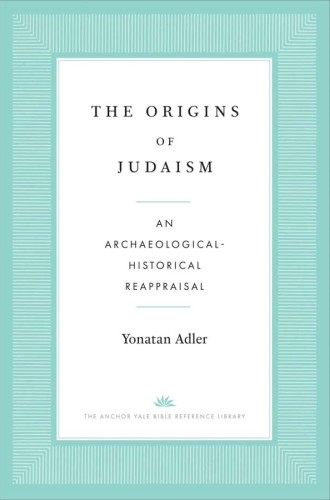When Judaism became Judaism
Archaeologist Yonatan Adler argues that widespread, ordinary observance of the Torah did not take place until the Hellenistic period.
Yonatan Adler posits a convincing thesis, tightly and compellingly argued, that widespread observance of Pentateuchal legislation by Judeans—or what we now call Judaism—emerged no earlier than the Hellenistic period. Surveying textual and archaeological evidence from the first century CE (when recognizable Judaism was at its Second Temple peak) and working backward, the archaeologist concludes that what we now recognize as Judaism arose in response to Hellenism, as a negotiation of the extent to which Judeans conceived of their common ethnicity by reference to a set of common ancestral customs based on the redacted Pentateuch. This happened, Adler argues, under the 80-year rule of the Hasmonaeans, a family whose members are widely recognized as the last leaders of an independent Israel before Judea became a client state of the Roman Empire in 63 BCE.
In his exploration of what are now quintessentially Jewish customs—following dietary and ritual purity laws; avoidance of figural art; circumcision; observance of sabbath, Passover, Yom Kippur, and Sukkoth; use of the seven-branched menorah; and use of synagogues—Adler shows we have no evidence that any of these practices existed before the Persian period. In fact, he argues, we have both textual and archaeological evidence to the contrary. For example, while images of God are clearly prohibited from the later Hasmonaean era onward, they are present in the Judean archaeological record before the Persian period and frequently referenced in the Hebrew Bible beyond the Pentateuch.
Adler does not challenge the ideas that the literary sources of the Pentateuch are all preexilic, that their redaction did take place in the exilic era, and that some groups from preexilic Israel and Judah practiced some of the legal codes that compose the Pentateuch. Nevertheless, he insists, the widespread, ordinary observance of the Torah as law for all Judeans—comprising a distinct sense of “Judaism” or “Jewishness”—did not take place until the later Hasmonaeans adopted these preexisting traditions and texts as the norm for everyone. The goal behind this shift, Adler posits, was to launch a program of cultural unification to establish Judean distinctiveness in the Hellenistic world. Isolation was not the goal, it’s important to note, because the Hasmonaeans themselves were very much Hellenistic monarchs and Judean life was irreversibly Hellenized by this point.





